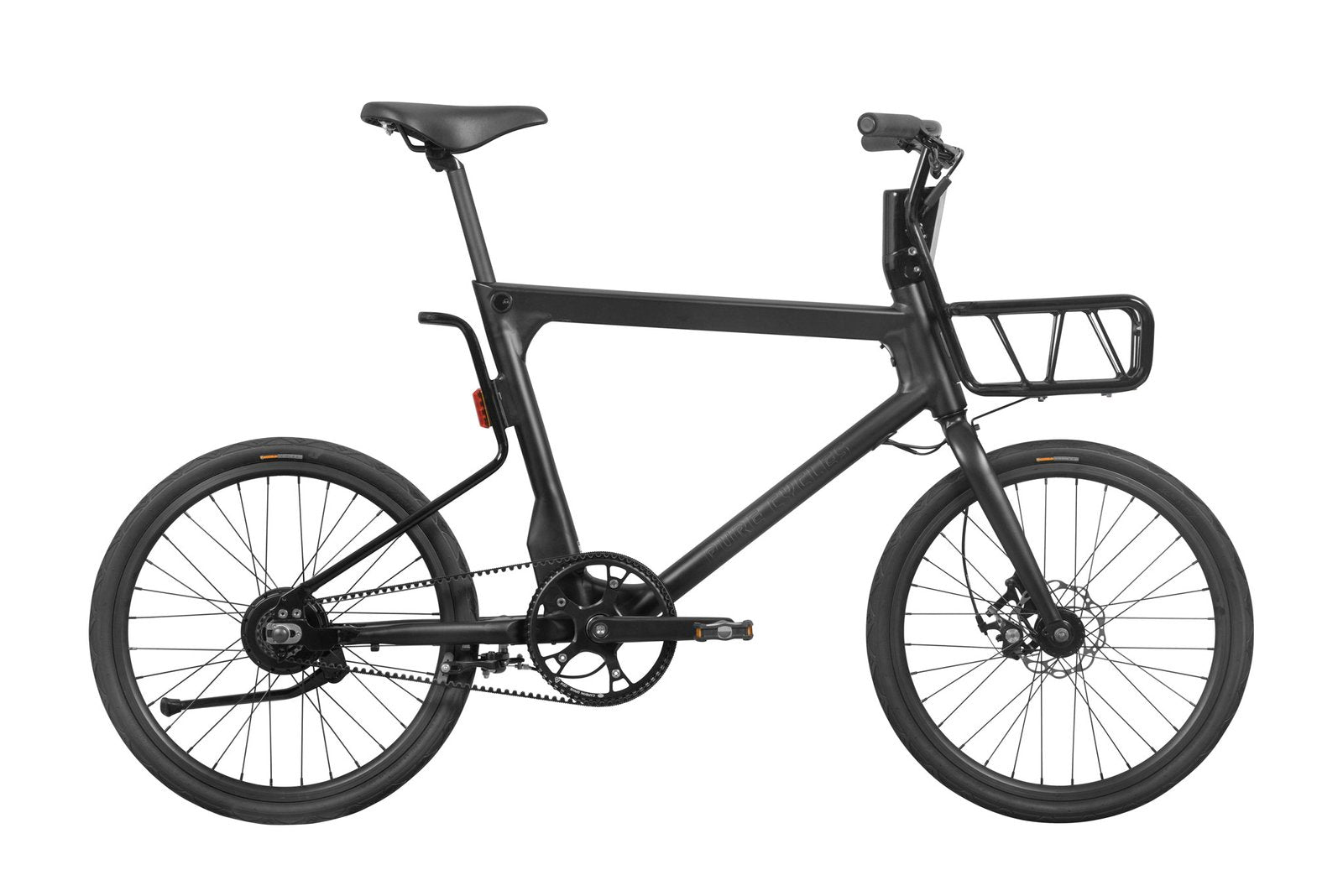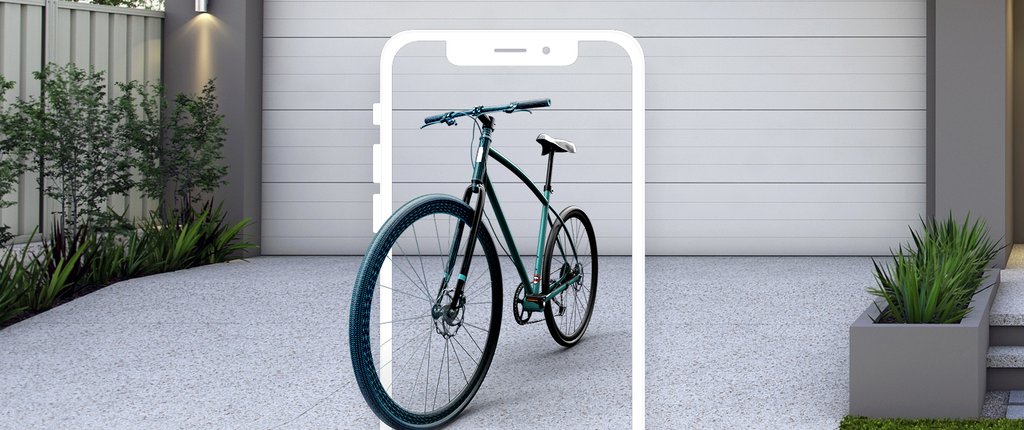Augmented reality (AR) has the potential to revolutionize mobile shopping by bringing products to life in front of you through 3D models that you can size up, examine from all angles, and even place in the environment around you.
At Shopify, we’re committed to making the incredible business potential unlocked by augmented reality more accessible for small businesses. That’s why we’ve built a services marketplace to help our merchants create 3D models of their products.
With Apple’s recent announcement of AR Quick Look, we can now enable these 3D models to be viewable in AR directly through the Safari browser on iOS 12 devices—without the need for a separate mobile app or a clunky headset.
Web-powered augmented reality represents an exciting leap toward making AR experiences readily available to the everyday shopper through mobile browsers.
A small group of Shopify merchants have already modeled their products through Shopify AR in anticipation of AR Quick Look. HORNE and Pure Cycles, two businesses in this group, shared their visions with us for the new Shopify AR service and the process of developing detailed 3D models of their products.
For Pure Cycles, AR adds another dimension to product pages
Jordan Schau is the co-founder of Pure Cycles, a company that sells affordable fixed gear bicycles both online and through physical retail.
What has Jordan and his team excited about the 3D models they’re creating through Shopify AR is the potential to provide an immersive shopping experience that empowers customers to remotely explore every inch, every part, and every angle of their products—an area where traditional product photography has fallen short.
AR shopping is now unlocked for a large portion of their market
Jordan has been a longtime follower and early adopter of augmented reality, having used AR-enabled apps like Strava in his day-to-day life. But he was skeptical about consumer adoption until now.
“Getting someone to download an app [with AR capabilities], and then use that as their main shopping app offers major friction for the user. But having it just baked into the browser—Safari, which is already taking an increasing share of our traffic—I think it's just going to explode.”
In the United States today, Safari retains nearly half of the market share for mobile browsers, which means that with iOS 12 a significant portion of Apple devices will be ready to shop with AR.
“It's pretty complicated and expensive to shoot all the angles to every bike, in every color that we'd want,” Jordan says of their current product photography workflow. Through AR Quick Look, Pure Cycles can give their customers a better way to get to know their products before they walk into their bike shop.
“For the people that want to go down and read through every spec in that spec list, they can now just quickly pop the bike up in front of them to examine. They’ll see, ‘Oh, yeah. That's a Shimano drivetrain.’ Or, ‘Oh, they're using neat brake levers. Cool. I like that.’”
Jordan still believes nothing quite matches the experience of coming into the shop and trying the bikes out in person to find the right fit, but says Shopify AR provides shoppers almost everything they need to make an informed purchase, short of an actual test drive.
“Is this bike too big for my apartment?” and other conversion obstacles
For Pure Cycles, AR helps answer the simple questions that become more challenging when shopping online.
“Being able to see the actual bike in front of you counts for a lot. Do I like these handlebars? Is this going to be too big for my apartment? All little questions, but any one of those little questions, when making a bigger purchase, can really hinder checkouts,” Jordan says.
Take the Volta for example, Pure Cycles’ latest electric bike, a high-ticket item ($2500) that they’ve chosen to model with Shopify AR. Jordan believes that one of its strongest selling points doesn’t quite come across in photos: its compactness.

“The bike has a shorter wheelbase, so it will fit in small apartments. Being able to see how it looks in your living room or your garage, wherever you keep it, I think, is a major benefit. That, and the fact that it is a very sleek-looking bike, so having the AR model really helps sell the future, high-tech feeling of the product.”
Beyond product pages, web-powered AR also stands to completely revolutionize whole industries, particularly those where purchase decisions depend on the context of where the products are used, like home furnishing.
For HORNE, Shopify AR brings the showroom to your home
HORNE was founded in 2008 by Ryan Walker and Alissa Parker-Walker with the promise of offering unique, authentic home furnishing items to counter the “buy disposable” mentality of the modern furniture market.
As an online-only business without a physical location, Ryan says he sees Shopify AR as a viable alternative to visual merchandising, where instead of walking into a carefully curated showcase of products on display, customers can see if a new product complements their space by viewing it next to the pieces they already own.
“You'd be surprised how many times people take a snapshot of their room, send it to us and ask, ‘Hey, would this lamp look good?’ We've basically become interior designers,” Ryan explains.
Ryan says his aim for these AR experiences is to make customers comfortable enough to make that purchase—a sizeable purchase that can often range anywhere from $2,300 to $7,000.
AR brings us closer to our customers—to their lives—in a way that we previously weren't allowed. It's a really beautiful thing.
It’s not just about increasing conversions, but reducing returns
The ability to visualize a product in your own space through your smartphone’s camera brings customers closer to the idea of owning it. But that’s not what gets Ryan the most excited about Shopify AR—it’s the prospect of creating more satisfied customers.
“We feel like we've failed if a customer is returning an item because they felt like it wasn't as described or it didn't actually live up to their expectations. A lot of times these misunderstandings simply come down to the customer not being able to visualize the product within their own setting,” Ryan explains.
Aiding interior designers through AR
Interior designers are often the intermediary between home decor brands and their end customers.
For HORNE, these professionals represent a significant segment of customers and influenced the products they chose to model first: high-end lamps where the subtleties in size, color, and finish are best appreciated when the product is right in front of you.
 Running iOS 12 on Safari? Try out AR Quick Look!
Running iOS 12 on Safari? Try out AR Quick Look!In using AR-ready products to make life easier for interior designers, Ryan also hopes to bring additional value back to the business. “An interior designer can just shoot a link over to their client. They can pop a product up on their phone, point it at their room, and have the client say, ‘That's perfect. I want it. Let's do it’.”
Experience the future with Shopify AR
Shopify AR provides an accessible toolkit for businesses to create their own AR experiences, including our services marketplace of 3D modelling partners, the 3D Warehouse App to store your models, and an easy way to add AR Quick Look support to your store.
We’re immensely excited about what companies like Pure Cycles and HORNE have already been able to create for their customers. As the full potential of AR shopping experiences continues to unfold, our goal is to make them more accessible and more valuable for our merchants and their customers.
If you’re a Shopify merchant, you can visit our help center to learn more about getting your store AR-ready.
